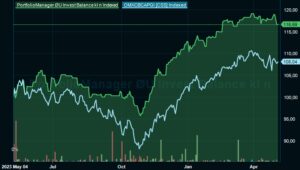Fra Zerohedge
Two weeks after BofA’s Michael Hartnett previewed (and timed) not only the “Great Fall” of stocks, but also explained that the Fed and global central banks are now in the business of making the “rich poorer“, he is out with a new note which looks at the Fed’s latest U-turn, which has unleashed the latest market buying spree, warning that “further upside in risk assets will create problems later in the year” (for three reasons he lists out), and concludes that “ultimately, we believe the extremely strong performance by equities and bonds in H1 is very unlikely to be repeated in H2.” Hartnett then goes back to his original thesis that the Fed will no longer pursue its primary mandate of pushing stocks (i.e. wealth effect and confidence) higher because it is “now politically unacceptable for the Fed and any other central bank to stoke a bubble on Wall St.”
As a result, “monetary policy will have to tighten to raise volatility, reduce Wall St inflation, and reduce inequality. There are two ways to cure inequality: you can make the poor richer, or you can make the rich poorer. The Fed will reduce its balance sheet in the hope of making Wall St poorer.”
Hartnett may be right, but for now Wall St. has obviously decided that when push comes to shove – or market goes to crash to be more specific – the Fed will not destroy its legacy from the past 9 years overnight (and perhaps even end the institution of the Fed if the coming crash is similar to 2008) and will simply do what it has done so many times before: fold and inject even more liquidity to stabilize assets.
Of course, “Wall St.” has been wrong before, and if the BofA strategist is right, pain is coming. He even says when:
The most dangerous moment for markets will be when rising rates combine in three or four months’ time with an inflection point in corporate profits. In anticipation of this, we would use the next couple of months to buy volatility, and within fixed income slowly reduce exposure to IG, HY, and EM bonds.
Key excerpts from his note below:
Icarus and inequality
Further upside in risk assets will create problems later in the year.
First, central banks will simply exacerbate inequality. Note how the total amount of hours worked necessary to buy a unit of the S&P 500 has risen to an all-time high (Chart 1).
Second, the combination of rising equity prices and balance sheet reduction starting in September will cause bond yields to rise. Central bank assets, most of which are held in fixed income assets, are now equivalent to 31% of the $49tn fixed income universe tracked by the BofA Merrill Lynch Global Fixed Income Markets Index (GFIM); and the percentage of global bond market monthly returns explained by the monthly change in central bank balance sheets has dramatically increased in recent years (Chart 5).
Note how in the past year, the months in which central bank asset purchases have either declined or been very small have coincided with months of weak performance from global bonds (Table 2). This was particularly the case in the fourth quarter of last year and a similar pattern is emerging this summer.
And finally, as bond yields rise, financial conditions will tighten. Financial conditions are a leading indicator of corporate earnings and they are already warning that US EPS will very soon hit a peak in YoY terms (Chart 6).
A simple indicator of financial conditions using Treasury yields, corporate bond returns, and the US dollar does a very good job of leading US profit growth by 6 months. The indicator of financial conditions is currently “easy” but less easy than it was 3-6 months ago.
Ultimately, we believe the extremely strong performance by equities and bonds in H1 is very unlikely to be repeated in H2. It is now politically unacceptable for the Fed and any other central bank to stoke a bubble on Wall St. Monetary policy will have to tighten to raise volatility, reduce Wall St inflation, and reduce inequality. There are two ways to cure inequality: you can make the poor richer, or you can make the rich poorer. The Fed will reduce its balance sheet in the hope of making Wall St poorer.
The most dangerous moment for markets will be when rising rates combine in three or four months’ time with an inflection point in corporate profits. In anticipation of this, we would use the next couple of months to buy volatility, and within fixed income slowly reduce exposure to IG, HY, and EM bonds.


















